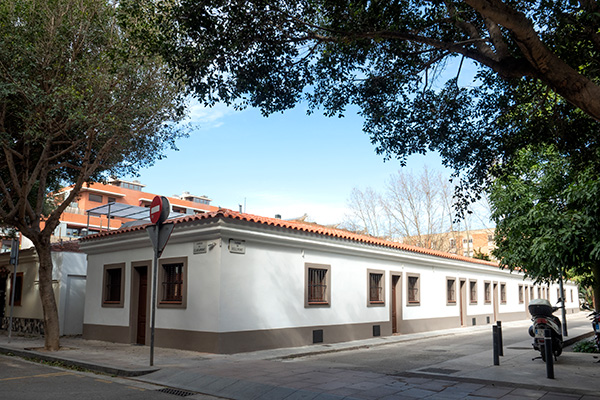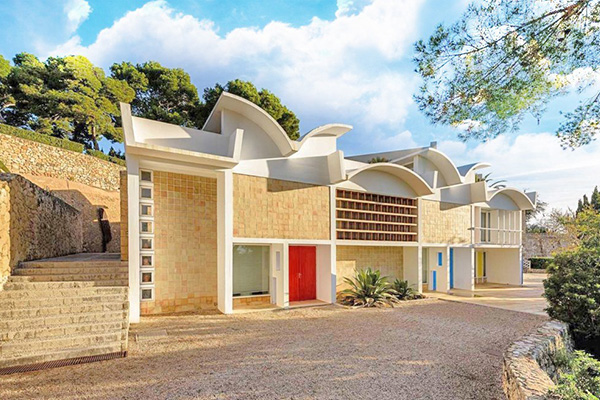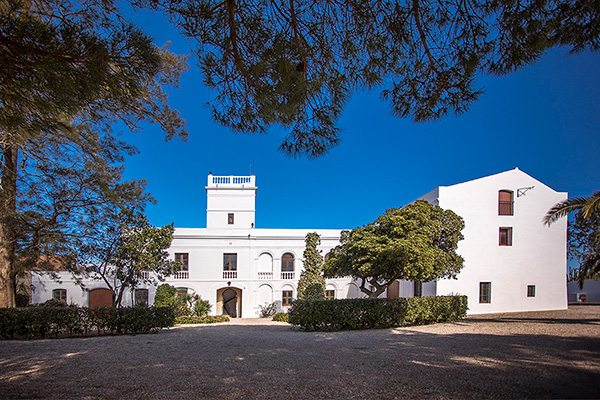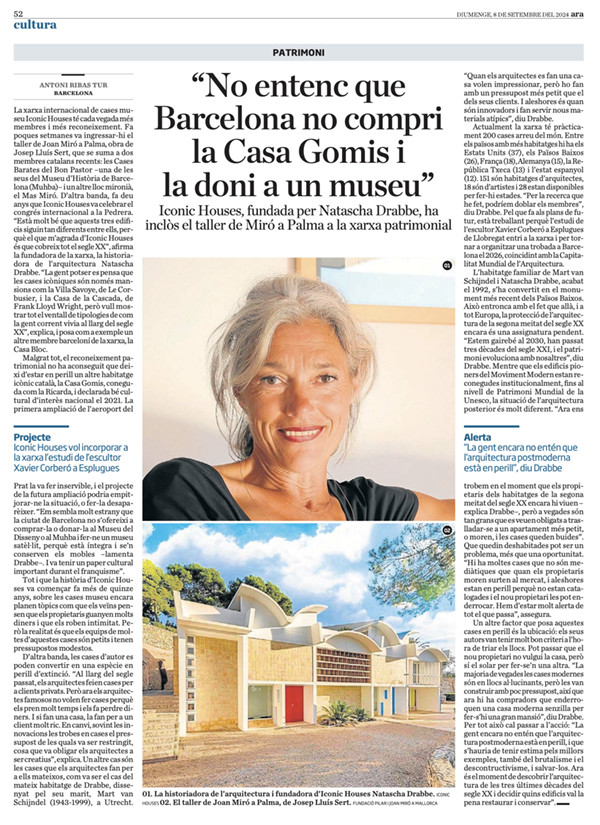SPECIAL - Best of Belgium
Architectural Conservation Trust Launched
Iconic Encounters: Barcelona
SPECIAL - Casas Icónicas en España!
Inside UNESCO Icons: Houses That Made History - Part 1
Inside UNESCO Icons: Houses That Made History - Part 2
Czech It Out: A Stylish Soirée of Exhibition and Film
Sopot Hosts Icons of Czech Avantgarde Exhibition
Pioneers of the Dutch Modern House - Film Screenings
SPECIAL – Austria
SPECIAL – Czech Classics
SPECIAL - Vacances en France!
SPECIAL – Iconic Dreams Europe
SPECIAL – Iconic Dreams North America
Tautes Heim. Story & Details
Casa Gomis acquired by Spain's Ministry of Culture
Our Badge of Honour
New Year's Reception and Eileen Gray Screening
Funding Win Marks Anniversary of Mackintosh Acquisition
Modernist Houses Lost in the LA Wildfires
Casa d’Abreu Neto: Siza’s First Work
Pioneers of the Dutch Modern House
Iconic Encounters: London
Interview in Leading Catalan newspaper ARA
Record Number of New Iconic Houses - Part 1
Record Number of New Iconic Houses - Part 2
At Plečnik House: To Decide Where the Shadow Falls
A Story of Burnt Books and Broken Bricks
Remembering Irving J. Gill
Iconic Houses in the Media in 2024
Bauhaus Villa in Berlin For Sale
Historical Exhibition, Marie-Laure de Noailles, Painter, Conversation
Mackintosh’s Hill House Becomes an International Iconic House!
Istanbul’s Modernist Ataköy Housing Estate is At Risk
Early Furniture Designs by Le Corbusier on Permanent Display in Maison Blanche
Photo Report City Icons Amsterdam
Healing Through Architecture
Reopening An Iconic Modernist Landmark
City Icons Kick Off with Talk by Linda Vlassenrood
MORE MIES - Pure Architecture in Haus Lange Haus Esters
Through a Bauhaus Lens: Edith Tudor-Hart and Isokon
Modernism Week Lecture: 12 Years of Iconic Houses
Aluminaire House Grand Opening
Exhibition Icons of the Czech Avant-Garde
An Elementalist and Mediterranean Architecture
Icon for Sale - Loos Villa: Haus Horner
SPECIAL – UK Originals
SPECIAL – Dutch Delights!
SPECIAL – German Greats!
SPECIAL – Northern (High)Lights!
SPECIAL – Iconic Collective Housing
SPECIAL – Women & Iconic Houses
SPECIAL – Iconic Artist Residencies
Support the Frankfurt Declaration (on Housing)
Winy Wants a World Wonder
Welcome Atelier Volten!
Sleep in a Modernist Gem – Huis Billiet in Bruges
Iconic Houses in The Netherlands - 100 Years Van Zessen House
Exclusive Tour and Film Screening Package
The Last House Designed by Adolf Loos Will Be Built in Prague
Icons of the Czech Avantgarde
Icon for Sale - Casa Legorreta
Rietveld Day: 200 Enthusiasts Explored 3 Utrecht Icons
Hurray! 10 Years Iconic Houses
7th International Iconic Houses Conference A Huge Success
Meet Conference Co-Chair Iveta Černá
Meet Conference Co-Chair Maria Szadkowska
Eighteen Iconic Houses Under One Roof
17 June - 'Pioneers-film' Screening Amersfoort
Iconic Houses in The Netherlands - Van Eesteren House Museum
Welcome Margarete Schütte-Lihotzky Zentrum in Vienna!
Welcome Vila Volman! Jewel of Czech Functionalism
Movie Night: Adolf Loos- Revolutionary Among Architects
'Inside Iconic Houses' Case Study House #26 Webcast in Webshop
Inside Iconic Houses at Taut’s Home in Berlin
Rediscovering Forgotten Loos Interiors in Pilsen
'Inside Iconic Houses' - Online Tour Program
Iconic Houses in The Netherlands - The Diagoon House
Iconic Houses in The Netherlands - Rietveld Schröder House
Rietveld Houses Owners Association
Corberó Space: New Life for Hidden Jewel
Iconic Houses in The Netherlands - Pierre Cuypers' House and Workshops
Reeuwijk Celebrates Completion of Restoration Rietveld Homes!
Iconic Houses in The Netherlands - Van Doesburg Rinsema House
Welcome Rietveld's Van Daalen House!
Architect Harry Gessner Passed Away at 97
Watch Pioneers of the Dutch Modern House Now On Demand
Icon Saved: Dorchester Drive House
Welcome Umbrella House!
Iconic Houses in the Netherlands – Berlage’s Masterpiece
Iconic Houses in The Netherlands - Het Schip
Inside Iconic Houses - Tour of Maison Cazenave
Inside Iconic Houses Tours Vizcaya Museum & Gardens in Miami
Casa Masó Celebrates 10 Year Anniversary
Inside Iconic Houses tours Roland Reisley's Usonian Frank Lloyd Wright House
Rietveld’s Experimental Housing in Reeuwijk Saved
Serralves Villa after restoration
Portraits of the Architect - Interview with Gennaro Postiglione
Test Labs for New Ideas - Interview with Natascha Drabbe
Inside Iconic Houses - Isokon Building
Inside Iconic Houses - 16 December: Sunnylands with Janice Lyle
BCN-BXL Coderch-De Koninck - Beyond Time
New Chairman Architect Nanne de Ru on The Perfect Platform
Health and Home - Interview with Beatriz Colomina
A Life Less Ordinary – Interview with Valentijn Carbo
Invisible Women - Interview with Alice T. Friedman
Winy Maas on the Green Dip
Anita Blom on Experimental Housing of the 1970s
Women’s Worlds - Interview with Natalie Dubois
The Culture of Living - Interview with Robert von der Nahmer
Hetty Berens: A Fresh Take on Modernism
Niek Smit on Supporting Modern Heritage
Alice Roegholt on Amsterdam’s Working-Class Palaces
July is Iconic Houses Month
Hans van Heeswijk on The Pioneers of the Dutch Modern House
Wessel de Jonge on Dutch Icons at Risk
Save Maison Zilveli - Sign the Petition!
How a Building Tells a Story - Recorded Event
Toolkit for Owners of a Modern House
13 Aalto Sites Nominated for UNESCO World Heritage
Villa Beer At Risk - Sign the Petition!
Business Cards of Stone, Timber and Concrete in the Brussels Region 1830-1970
Exhibiting & Visiting Modernist Monuments
Fostering Well-Researched Responsible Design
ICONS AT RISK
Enjoy a virtual visit to the California House and a Q&A with architect Peter Gluck
Exhibition 'Modernism and Refuge'
A Hidden Gem of Postmodernism
New Centre for Historic Houses of India
An Online Chronicle of the Douglas House
Villa Henny, geometric style icon in The Netherlands
A Mendini temple in Amsterdam
IH-lectures USA & Canada Feb 2020 on Melnikov House
Sponsors and Friends
An Afternoon with the Glucks
Chandler McCoy on Making Modern Houses Sustainable
Catherine Croft: Getting Away from the Demolition Mentality in the UK
Patrick Weber on Discovering an Unknown Icon
Fiona Fisher on Iconic Interiors
Jocelyn Bouraly on Villa Cavrois
Mireia Massagué on finding success through a new kind of partnership
Danish Moderns – Looking Back at Our Mini-Seminar
Venturo house complements Exhibition Centre WeeGee’s offering
Lecture report: Remembering Richard Neutra
Hôtel Mezzara and the Guimard Museum project
We welcome 13 new members!
BREAKING NEWS: 8 Wright Sites Inscribed on Unesco World Heritage List!
LECTURE 29 August - Raymond Neutra: My Father and Frank Lloyd Wright
Iconic Reads
Iconic Houses End Year Message
City-ordered rebuild of landmark house stirs debate: Appropriate or overreach?
Kohlberg House Restoration in Progress
Planned Demolition of Rietveld Homes in Reeuwijk
Renovation Gili House in Crisis
An Iconic Saga
Restoring Eileen Gray’s Villa E-1027 and Clarifying the Controversies
Modernism on the East Coast
Iconic Houses in Latin America
Conference testimonials
House Tours May 2018
Expert Meetings
Natascha Drabbe - Iconic Houses: The Next Chapter
Terence Riley -KEYNOTE SPEAKER- on Philip Johnson
New era for Villa E-1027 and Cap Moderne
Hilary Lewis on Philip Johnson and his Glass House
John Arbuckle on Great House Tours
William D. Earls on the Harvard Five in New Canaan
Stover Jenkins on Working for Philip Johnson
Frederick Noyes on his Father’s House
Scott Fellows and Craig Bassam on their Passion for Preservation
Jorge Liernur -KEYNOTE SPEAKER- on Latin American Modernism(s)
Fabio Grementieri on Modernism in Argentina
Catalina Corcuera Cabezut on Casa Luis Barragán
Renato Anelli on Lina Bo Bardi’s Casa de Vidro
Tim McClimon on Corporate Preservation
Amanda Nelson on Building Donor Relationships
John Bacon on Planned Giving
Jean-Paul Warmoes on the Art of Fundraising in America
Chandler McCoy on Why Less is More
Katherine Malone-France on Moving with the Times
Anne Mette Rahbæk on Philanthropic Investments and Preservation
Peter McMahon on Saving Modern Houses on Cape Cod
Toshiko Kinoshita on Japanese Modern Heritage Houses
Roland Reisley on Life in a Frank Lloyd Wright House
5th Iconic Houses Conference May 2018
Kristin Stone, Pasadena Tour Company
Restoring the past: The Diego Rivera and Frida Kahlo Home Studio
Behind the Scenes: Hendrick de Keyser Association
Crosby Doe, Architecture for Sale
Latin America Special – Focus on Mexico
De Stijl in Drachten
Preserving the Nancarrow House-Studio
Meet the Friends - Nanne de Ru
Latin America Special – Focus on Brazil
Jan de Jong’s House is Latest Hendrick de Keyser Acquisition
Stay in a Belgian Modernist Masterpiece
In Berlin’s Modernist Network
Rietveld-Schröder House Celebrates De Stijl Anniversary
Meet Our New Foundation Board Members
Maintaining Aalto's Studio – Linoleum Conservation
Virtual Tour of a Papaverhof Home in 3D
Getty Grant for Villa E-1027
Plečnik House in Ljubljana
Iconic Dacha
Iconic Houses: A Bohemian Road Trip
Work in Progress: Capricho de Gaudí
11 Le Corbusier Homes now on Unesco World Heritage List
At home with Le Corbusier
Henry van de Velde’s Study in Haus Hohe Pappeln Restored
Lynda Waggoner reports
A Conference to Remember
4th International Iconic Houses Conference
Guest of Honor - Harry Gesner
Fallingwater: European Lecture Tour
Wright Plus 2016 Walk
Susan Macdonald, Getty Conservation Institute
John Mcllwee, Garcia House
Meet the Friends – Elisabeth Tostrup
Iconic Houses: The Story So Far
Willie van Burgsteden, designer Iconic Houses
Buff Kavelman, Philanthropic Advisor
Meet the Friends - Frederick Noyes
Sheridan Burke, GML Heritage
Meet the Friends - Raymond Neutra
Sidney Williams, Frey House
Franklin Vagnone and Deborah Ryan, Museum Anarchists
Meet the Friends - James Haefner
Toshiko Mori, architect
Malachi Connolly, Cape Cod Modern House Trust
Meet the Friends - Penny Sparke
Lucia Dewey Atwood, Eames House
Cory Buckner, Mutual Housing Site Office
Jeffrey Herr, Hollyhock House
Speaking Volumes: Building the Iconic Houses Library
Sarah Lorenzen, Neutra VDL Studio and Residences
Ted Bosley, Gamble House
Keeping It Modern - Getty Conservation Grants
Meet the Friends - Thomas Schönauer
Wim de Wit, Stanford University
Linda Dishman, Los Angeles Conservancy
Jesse Lattig, Pasadena Heritage
Join us in Los Angeles! Update
Work in Progress: Casa Vicens
Work in Progress: Van Wassenhove House
Work in Progress: Villa Cavrois
Work in Progress: The Pearlroth House
Conference calls!
Follow us!
Third Iconic Houses Conference a huge success
Conference House Tours Barcelona
Marta Lacambra, Fundació Catalunya-La Pedrera
Natascha Drabbe, Iconic Houses Foundation
Special speaker Oscar Tusquets
Jordi Tresserras, UNESCO Network ‘Culture, tourism and development’
Christen Obel, Utzon Foundation
Elena Ruiz Sastre, Casa Broner
Fernando Alvarez Prozorovich, La Ricarda
Tim Benton, Professor of Art History (Emeritus)
Susana Landrove, Docomomo Spain
Rossend Casanova, Casa Bloc
Icon at Risk: Casa Gomis / La Ricarda
Conference Program 25 November 2014
Jordi Falgàs, Casa Rafael Masó
Documentary La Ricarda
Marga Viza, Casa Míla/La Pedrera
Celeste Adams, Frank Lloyd Wright Trust
Conference 25 November 2014 at La Pedrera
Henry Urbach, The Glass House
Victoria & Albert Museum London November 12, 2013
Tommi Lindh, new director of the Alvar Aalto Foundation and Museum
Iveta Černá, Villa Tugendhat
Lynda Waggoner, Fallingwater
Kimberli Meyer, MAK Center
Rent a house designed by Gerrit Rietveld
Barragán House on Screen
Gesamtkunstwerk – An Icon on the Move
Triennale der Moderne 27 September - 13 October 2013
Prestigious Art Nouveau mansions in Brussels open
September 14 + 15: Heritage Days in Paris
June's New Arrivals: Museum Apartments
Iconic Houses is now on Twitter and Facebook
Corbu’s Cabanon: Reconstruction and Lecture
Projekt Mies In Krefeld: Life-sized model of the Krefeld Clubhouse
New arrivals: Spain special
MAMO: Le Corbu’s ‘Park in the Sky’ open 12 June
Taut's Home wins Europa Nostra Award
Annual Wright Architectural Housewalk: 18 May
Frank Lloyd Wright Homes on Screen
Message from the Editor
Neutra’s House on Screen
Michel Richard, Fondation Le Corbusier
Symposium The Public and the Modern House
Melnikov House on Screen
Iconic Houses in the media
Message from the Editor
Round Table Review
Eileen Gray House on Screen
Copy Culture
At Home in the 20th Century
New 20th century Iconic Houses website launches
Philippe Bélaval, Centre des monuments nationaux
Interview in Leading Catalan newspaper ARA
Natascha Drabbe: "I don't understand why Barcelona doesn't buy Casa Gomis and donate it to a museum"

The founder of Iconic Houses warns that Antoni Bonet Castellana's house Casa Gomis, known as La Ricarda in El Prat is in danger, and welcomes three recent Spanish members to the network: Cases Barates Bon Pastor in Barcelona, Joan Miró's Sert Studio in Palma and Mas Miró in Mont-roig del Camp.

| Cases Barates Bon Pastor in Barcelona |

| Joan Miró's Sert Studio in Palma |

| Mas Miró in Mont-roig del Camp |
The international house museum network Iconic Houses has more and more members and more recognition. A few weeks ago, Joan Miró's workshop in Palma, the work of Josep Lluís Sert, joined two recent Catalan members: the Cases Barates Bon Pastor - one of the headquarters of the Barcelona History Museum (Muhba )– and another site from Miró, the Mas Miró. On the other hand, it has been ten years since Iconic Houses held the international congress at La Pedrera. "It's great that these three buildings are so different from each other, because what I like about Iconic Houses is that it covers the entire 20th century," says the network's founder, architectural historian Natascha Drabbe. "People might think that iconic houses are just mansions like Le Corbusier's Villa Savoye and Frank Lloyd Wright's Fallingwater, but I want to show the whole range of typologies of how ordinary people lived in the throughout the 20th century", she explains, giving another Barcelona member of the network, Casa Bloc Museum Apartment, as an example.

| Casa Bloc Museum Apartment |
Despite everything, heritage recognition has not managed to stop another iconic Catalan house, La Ricarda, from being in danger. The first expansion of El Prat airport made it unusable, and the future expansion project could worsen the situation, or make it disappear. "It seems very strange to me that the city of Barcelona does not offer to buy it or give it to the Design Museum or the Muhba and make it a satellite museum, because it is intact and the furniture is preserved", laments Drabbe. "And it played an important cultural role during the Franco regime," she emphasizes.
Although the story of Iconic Houses began more than fifteen years ago, there are still clichés about museum houses such as that neighbors think that the owners make a lot of money and that they steal their privacy. But the reality is that the teams in many of these houses are small and have modest budgets. Likewise, if they are too small to host cultural events that bring benefits, those responsible look for spaces nearby to be able to do so. "Factories and offices you can renovate. In a house the first thing you renovate is the kitchen, and the bathroom is the first thing you change, and then you lose an important part of the history of the house, because they are the places where lots of new technology," says Drabbe.
On the other hand, designer houses can become an endangered species. "Throughout the last century, architects made houses for private clients. But now famous architects don't want to make houses because it takes a lot of time and makes them lose money. And if they make a house, they make it for a very rich client . Instead, you often find innovations in houses whose budgets were restricted, which forced the architects to be creative," she explains. Another case is the houses that architects make for themselves, as was the case with Drabbe's own home, Van Schijndel House, designed by her husband, Mart van Schijndel (1943-1999), in Utrecht. "When architects build a house, they want to impress, but they do it with a smaller budget than their clients. And that's when they're innovative and use new atypical materials," says Drabbe.
A network with a lot of potential
Currently the network has almost 200 members worldwide. Among the countries with the most homes are the United States (37), the Netherlands (26), France (18), Germany (15), the Czech Republic (13) and Spain (12). 151 are homes of architects, 18 are of artists and 28 are available for stays. "From the research I've done, we could double membership," says Drabbe. As for future, she is working to bring the sculptor Xavier Corberó's studio in Esplugues de Llobregat online and to organize a meeting again in Barcelona in 2026, coinciding with the World Capital of Architecture.
The home of Mart van Schijndel and Natascha Drabbe, completed in 1992, has become the most recent monument in the Netherlands. This coincides with the fact that there, and throughout Europe, the protection of the architecture of the second half of the 20th century is still a pending subject. "We're almost in 2030, three decades into the 21st century, and heritage is evolving with us," says Drabbe. While the pioneering buildings of the Modern Movement are institutionally recognized, up to the level of UNESCO World Heritage, the situation of later architecture is very different. "We are now at a time when the owners of the homes from the second half of the 20th sometimes they are so old that they are forced to move to a smaller apartment, or they die, and the houses remain empty." That they remain uninhabited can be a problem, rather than an opportunity. "We found that there are a lot of houses that come on the market when their owners die, and then they are in danger because they are not listed, and the new owner can tear them down. We must be very aware of everything that happens.", she assures.
Another factor that puts these houses in danger is the location: their authors had very good judgment when choosing the places. It may happen that the new owner doesn't want the house but wants the lot to build another one. "Most of the time modern houses are in amazing locations, but they were built on a shoestring budget. So now there are buyers knocking down a simple modern house to make a big McMansion out of it," says Drabbe.
For all this, she says, action must be taken. "People still don't understand that Postmodern architecture is in danger, and that the best examples, including Brutalism and Deconstructivism, should be cherished and saved. Now is the time to discover the architecture of the last three decades of the 20th century and decide which buildings are worth restoring and preserving," she underlines.
Another future challenge affecting heritage buildings is how to implement measures to improve their energy efficiency and what to do when they no longer meet regulations. "It's impossible for these houses to meet current regulations, it's ridiculous," warns Drabbe. "Doors in houses built today in the Netherlands have to be 1.20 meters wide to allow a wheelchair to pass through. But you can't widen the corridors of a modernist house, because you ruin the uniqueness of the design. On the other hand, the window frames of these homes, made of stainless steel or aluminium, tend to be very thin, and it is very difficult to fit double or triple glazing. Therefore, I think it is impossible for most of them to meet all the regulations.", she emphasizes.
More sustainable tourist attractions
For Drabbe, museum houses represent a less massive model of tourism. "It is very good that the mayor of Barcelona wants to ban tourist apartments. Barcelona residents can no longer rent a flat because so many of them are for tourists. It is important that tourism is distributed throughout the country. Amsterdam is almost like Venice, capitals that have become theme parks," laments Drabbe.
Likewise, she believes that museum houses offer historical content without the large dimensions, which can become overwhelming, of large museums such as the Louvre or the Metropolitan. If one is not clear about what one wants to see, the magnitude of the museum can be daunting. Instead, Drabbe sees modern house museums as "time capsules in many different ways." "Tours are very much appreciated, because they can be experienced in very different ways, which makes them interesting for audiences of all ages. Tours can be educational and at the same time fun," says Drabbe. "The non-specialist public can consider how the inhabitants of the house lived - she concludes -, as if they had been their neighbours. Those interested in lifestyle can be inspired by it for their own houses, and architects, interior designers and designers can pay more attention to technical innovations and look at construction from the point of view of engineers. And the houses also provide a lesson in political and social history, so they are a very accessible and entertaining way to learn something about the past."
Posted September 18, 2024
*This article by Antoni Ribas was first published in ARA newspaper on 8 September 2024. This English translation of the article is done by Google Translate and Iconic Houses.
